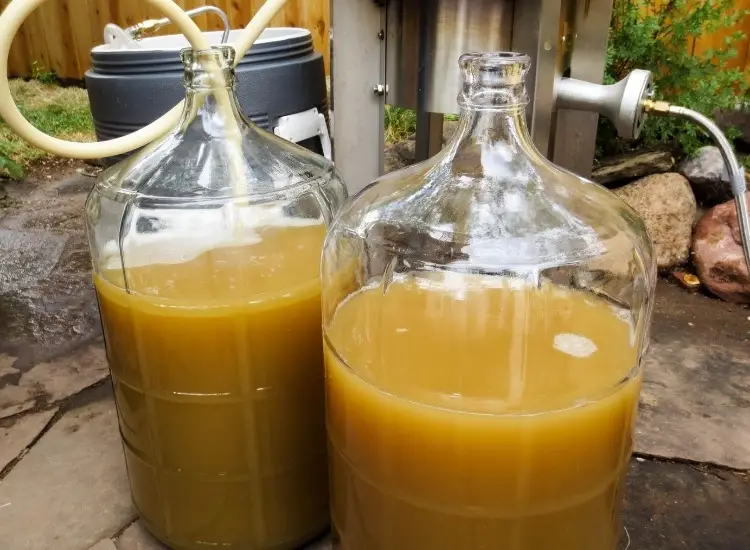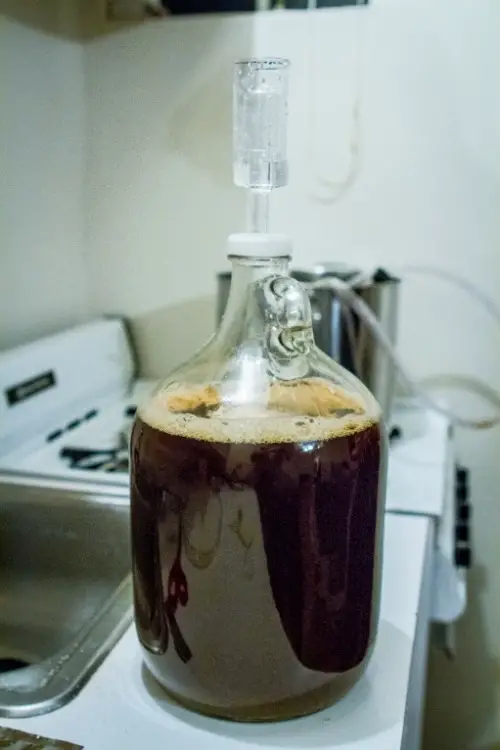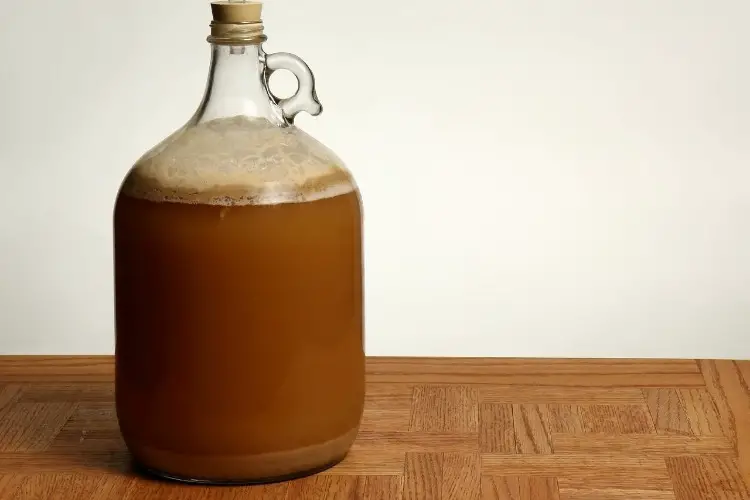The standard batch of home-brewed beer is five gallons. A question you may ask yourself, is five gallons too much? Can I brew one-gallon batches instead? There are pros and cons to both approaches. I will guide you through.
While Five gallons is the standard size for a batch of homebrew, some choose to go smaller. One gallon is quick, easy, cheap, and manageable so that some prefer it. It is not a question of what is better, but rather what are your needs?
Brewing a Full Five Gallons
Most kits are about 3.3 pounds of malt.
Two hopped cans will make a hearty brew, about 1.052 – 1.058 OG.
Boil for 45 minutes (average), cool, dilute with water, pitch yeast, and you are well on your way.
For beginning brewers, this is the start of your brewing adventures.
Five gallons produces about two cases of beer or about 48 bottles, give or take.
If you brew twice a month for 2 months in the spring and fall, you have enough beer for all social needs as well as your evening wind down beers.
Once you deem your beer drinkable and your friends seem to enjoy it, it makes good Christmas and birthday gifts. Bring it to barbecue’s and make it the beverage of choice at your own cookouts. Five gallons produces the volume for all of the above.
Is your kitchen roomy, do you have a basement or a roomy closet?
If the answer is yes to at least one of these, then five gallons is also a good choice. When I began my kitchen was small, but I had a decent closet. I even had a root cellar under the porch where I could store beers during the summer. It was damp down there but never got above 56°F/13°C.

Pros and Cons of Five-gallon batches
| PROS | CONS |
|
|
Why Brew One Gallon Batches?
I brewed one gallon to learn control and develop my flavor palate.
One gallon seems pretty small. Why would I do this?
There are a couple reasons.
First, your environment may dictate your efforts. You have a kitchen alcove only, no closets and live in an apartment.
No problem, this may all be overcome.

Experimentation
One-gallon batches are more for experimentation with different malt and hops. You will yield about ten, twelve-ounce bottles.
Early on in my home-brewing adventures, I went for a period of about 3 months when I brewed one-gallon batches exclusively.
I learned to pinpoint malt and hop flavor specifically, not in a general sense.
You can isolate malt flavors specifically and mix and match hops precisely. This builds an important quality of perception to your brewing.
You will come to understand exactly what character each ingredient offers.
Control of the Process
I ran into problems brewing five-gallon batches.
Here is a brief list of my early struggles, perhaps they have been yours as well.
Dialing back to one gallon batches helped me get back on course.
Early homebrew problems
- Infection due to improper handling
- Too low and too high starting gravities
- Oxidation during fermentation
- Pitching above the temperature threshold
Infection
We make mistakes.
This is not a bad thing IF you learn from them.
I did not know what I was doing the first time.
I did not know how to take a sample using a sanitary dipper or turkey baster.
Small batches are good for control.
You can literally put your hands around everything.
Every process is much quicker (excepting the boil).
Gravity
The amount of everything is compacted and truncated, hopping, extract, cracking a handful (literally) of flavoring malt, adding AN ounce of hops.
The parameters have shrunk.
Oxidation
My 4th or 5th batch of beer was a Märzen, five gallons. It went off perfectly.
However, I racked it off into secondary and I forgot to put the extension tube on the siphon hose.
The beer was finishing its primary fermentation and well into its anaerobic (oxygen free) state.
I splashed it vigorously, introduced O2, and it killed the beer.
It tasted like a mouthful of wet paper towels.
With one gallon, such a short sweet siphon, even if you did introduce a little O2, it is over so quick it would not matter.
Temperature Control
One problem with winter and early summer brewing is extreme temperatures.
Too cold and the yeast sleeps.
Too hot, and the yeast feasts and produces off-flavors.
Sounds crazy perhaps, but you can wrap your fermenter in a towel or blanket to regulate the temperature.
In winter, it will insulate it. In summer, it also insulates for a day, but then you wet the towel and evaporation causes the beer to stay cooler than ambient temperature.
Fermentation is an endothermic process- that is it creates heat as the yeast converts sugar and metabolizes. While the smaller vessel has more surface area relative to volume, it is still easier to regulate its temp.
Cost and Time
Brewing small costs less.
You can finish it and clean up in as little as 45 minutes.
You can use leftover ingredients. It is what one may call la lagniappe, a little something extra.
Instead of buying expensive glass carboys, you can use recycled glass cider jugs. Your mom or grandma likely have some lying around.
Pros and Cons of One-Gallon Batches
| PROS | CONS |
|
|
In summation
In the end, it depends on your space, temperament and how much control you want.
Some brew 5-gallon batches with great success, rarely have problems and would never consider another way.
I was impetuous and distracted. I made a lot of mistakes. I showed resilience and stuck with it when many would give up.
In the end, it made me a better brewer.
I messed up several many 5-gallon batches, at least 6, and so stepped down to 1-gallon batches to really hone my craft.
Within three years of my first homebrew session, I brewed my first professional batch in a brewpub.
That was my journey. You decide yours.
Finally, one short anecdote. I lived in the mountains of North Carolina for almost 20 years. There I learned to love trout fishing. While learning to fly-fish, I read a zany illustrated book about fishing, called The Curtis Creek Manifesto. In it the author says something to this effect. An angler who learns to fish in small water, a creek, a brook, a stream, can make the jump to a big river, like in the West. NC is full of small creeks.
An angler who learns to fish in big water, deep rushing rivers and lakes, will have a hard time with small brushy creeks.
I find the same is true with beer. Five gallons is perfect and standard. And if you can execute on a micro homebrew level, the lessons the one-gallon batch teaches you may otherwise be overlooked or unseen.

